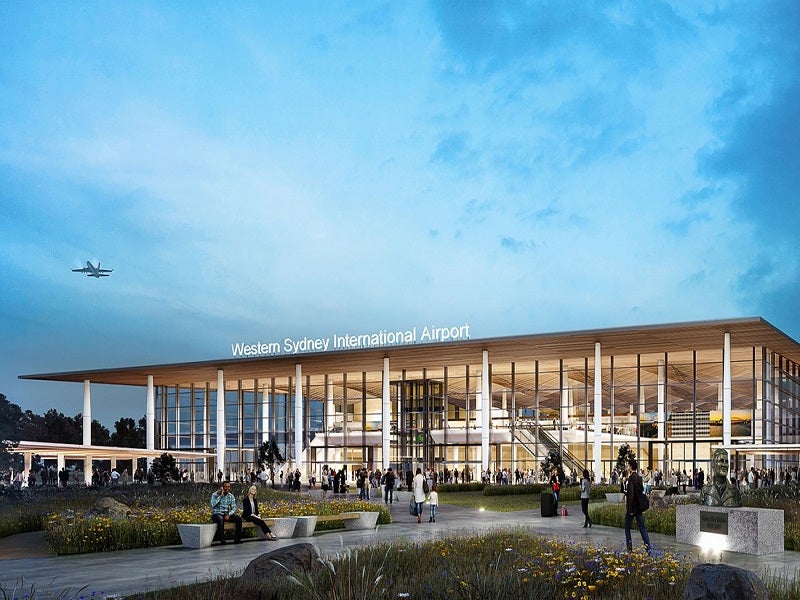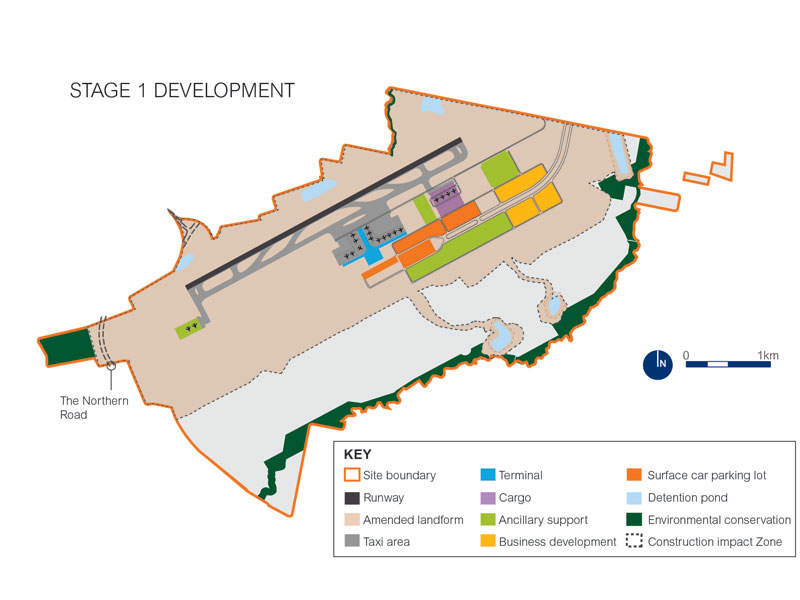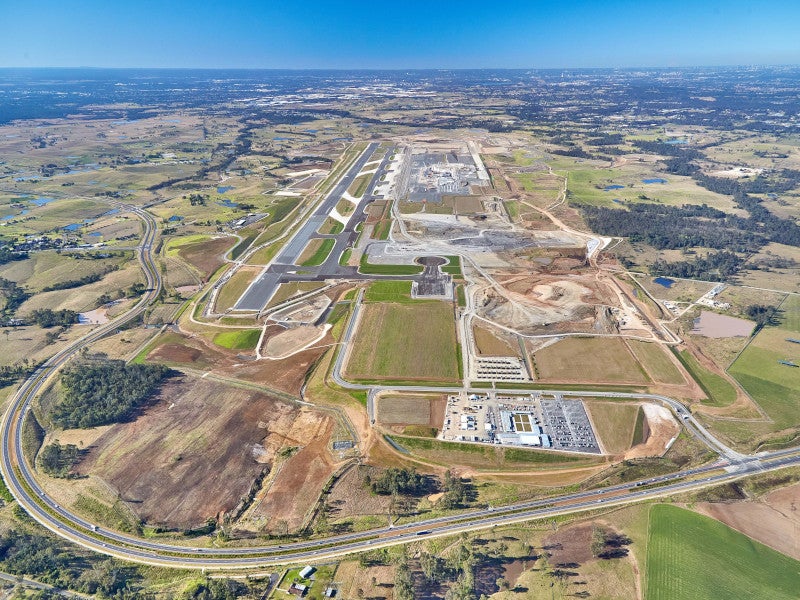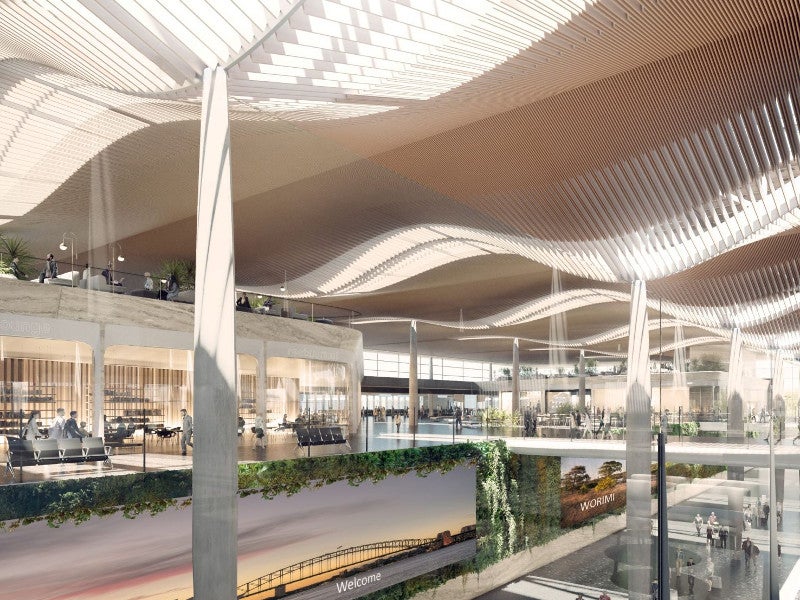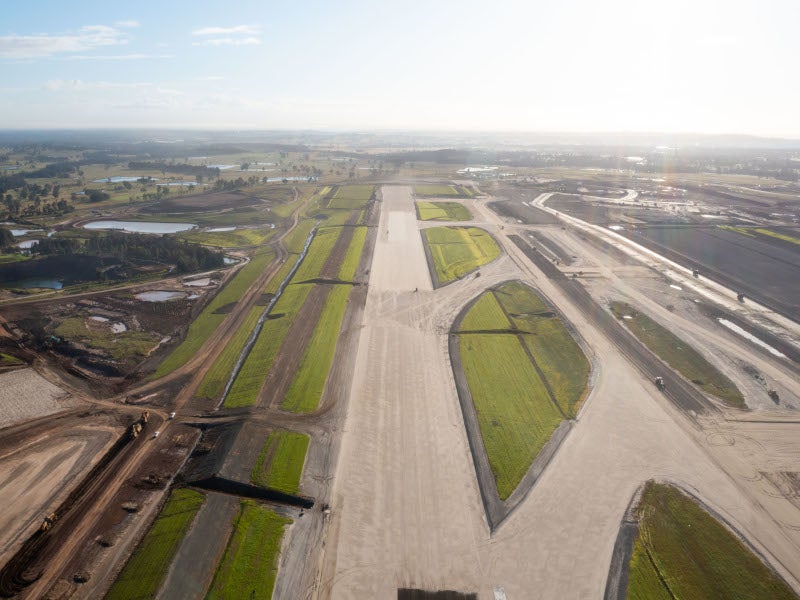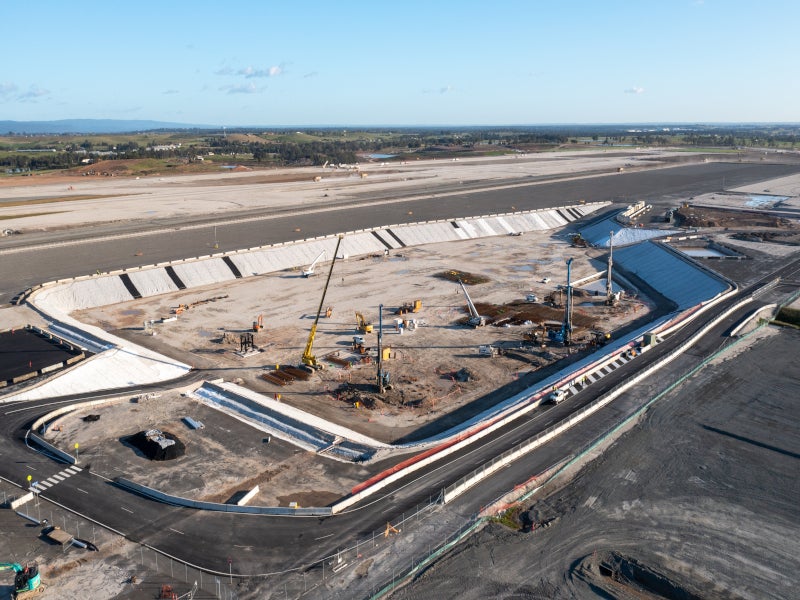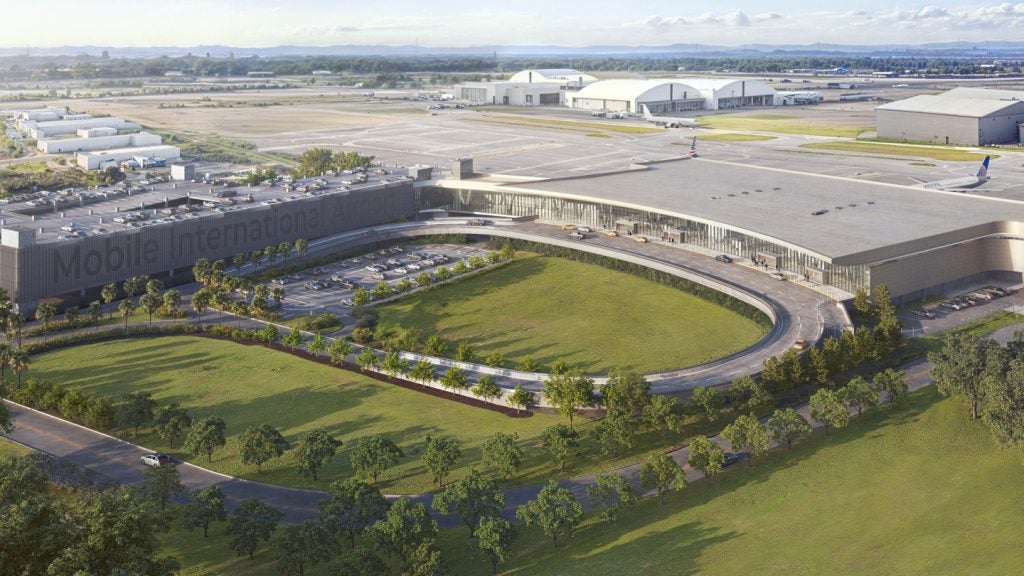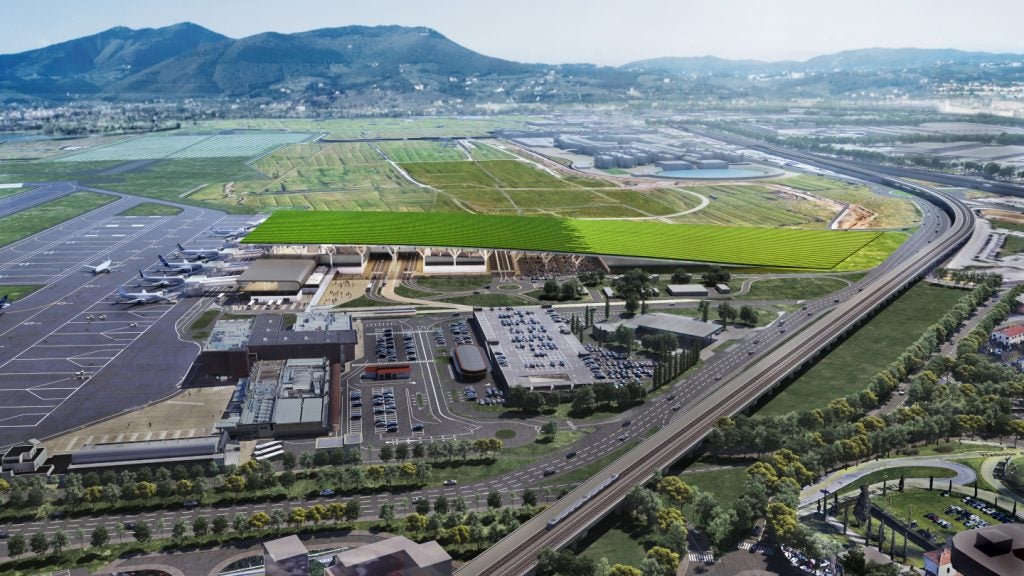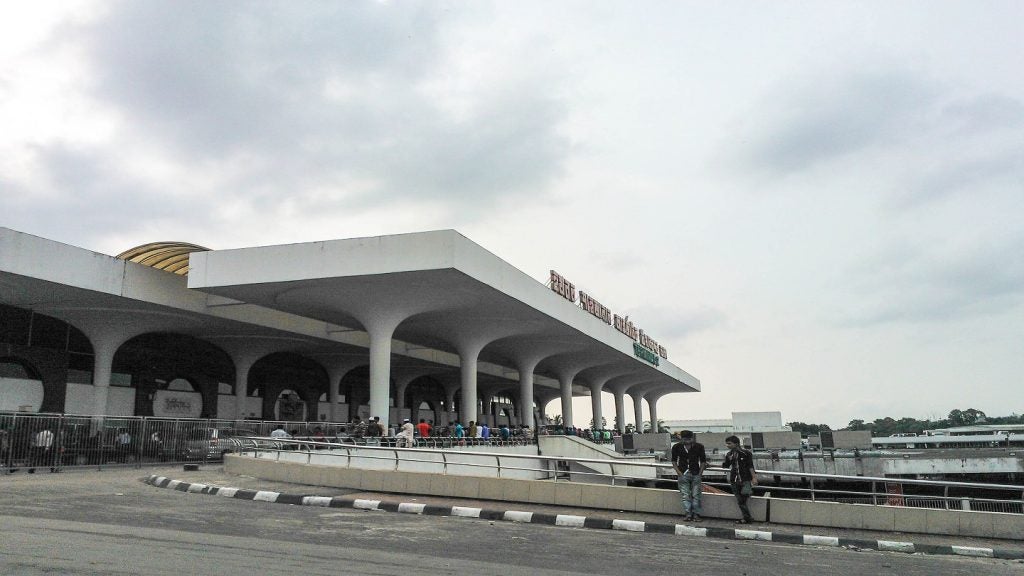Western Sydney International Airport, also known as Nancy-Bird Walton Airport, is under construction in Sydney, Australia. It is one of the most significant infrastructure developments in the country.
Western Sydney Airport (WSA), the company responsible for the construction and operation of the airport, was formed in August 2017. The airport construction plan was finalised by the Australian Government in December 2016.
The proposed airport will cater to the projected aviation growth in Sydney, which is anticipated to double in the next 20 years. It will also ease traffic congestion at the existing Sydney airport, improving services for passengers.
Western Sydney Airport is being constructed in stages, with the first stage scheduled for completion in 2026, when the airport is expected to commence international and domestic passenger and freight services. The first phase is expected to accommodate ten million passengers a year while the airport will be expanded further, depending on the demand.
A ground-breaking ceremony at the construction site was held in September 2018. The final design of the passenger terminal was unveiled in June 2021 while construction officially commenced in November 2021. Construction of the runway began in March 2022.
The construction and operation of the airport will boost Western Sydney’s economy by creating 28,000 direct and indirect jobs by 2031, including approximately 1,200 direct jobs during the airfield construction stage. Approximately $1.9bn in economic activity is expected to be generated during the construction period.
International airport location
Badgerys Creek was selected as the ideal location for the proposed airport after evaluating 80 sites in the Greater Sydney region.
The 1,780ha site is double the size of the existing Kingsford Smith Airport and offers proximity to road and rail transport links. It has also been protected from incompatible urban development by long-standing planning restrictions.
The site allows Sydney to have a curfew-free airport that will add value to the region’s economy.
Airport development details
Western Sydney Airport will serve domestic and international passengers, as well as air cargo services.
The first stage of the project involves the construction of a passenger terminal, a single runway, cargo facilities, maintenance areas, ground transportation facilities, car parks, and supporting infrastructure.
The construction also covers the realignment of Badgerys Creek Road, the relocation of utilities, construction of a new roundabout on Elizabeth Drive, bulk earthworks, and stockpiling.
The cargo area will contain loading, staging and apron spaces, and taxiways. A truck staging area will also be built while provisions for dedicated aircraft maintenance, repair, and overhaul hangars will also be created.
The airport’s design provides scope for expansion to meet future demand.
Passenger terminal details
The new terminal is being built between the two proposed runways in the midfield area to optimise the connection between landside operations and the airfield.
It will house check-in desks, gates, and baggage claim areas for international and domestic operations.
The dual-use facilities will benefit airlines and passengers by accommodating various aircraft, increasing the efficiency of transfers, and enabling the use of shared contact gates.
Passenger facilities at the terminal will include baggage drop systems, security desks, kiosks, migration/immigration areas, baggage handling and claim areas, departure lounges, and commercial areas.
The airfield will be able to support emerging technologies such as electric aircraft in the future. It will include 3,000 aeronautical ground lights, more than 40km of roads, and 90km of power and fibre optic cabling.
The terminal roof will be installed with solar power generation capacity. It will also be able to harvest rainwater.
The terminal will also include landscape gardens, entertainment venues, and dining and retail spaces. The entrance of the terminal will feature soaring timber ceilings while vertical gardens will enhance the airport’s beauty.
Retail developments at the terminal will include speciality retail, restaurants, and cafes. An outdoor plaza will be built to host events such as food festivals, markets, and community celebrations.
Runways at the new Sydney airport
Two runways of equal length were proposed for the airport, with one being built during the first stage of construction. The first runway will be 3,700m long and capable of handling 63,000 aircraft movements a year. At full capacity, it will handle approximately 185,000 aircraft movements and 37 million passengers a year.
The runway will support all commercial aircraft, as well as the latest generation of ultra-long-haul airliners such as the A350-1000 and Boeing 777X. It will be compliant with the CAT III-B instrument landing system.
Construction of the second runway will be initiated based on demand by 2050. The two runways will together be able to serve 82 million passengers and handle approximately 370,000 aircraft movements annually.
Ground transport facilities
The new airport will be easily accessible via ground transport options, including road and rail. As part of a $3.6bn Western Sydney Infrastructure Plan, the Australian and New South Wales governments proposed a new M12 motorway, which will connect the proposed airport with the existing motorway network at the M7.
The Australian government invested $26m to develop a detailed concept design for rail access at the airport site. The results of the Joint Scoping Study on Western Sydney rail needs, initiated by both the governments, revealed the feasibility of developing new rail links. The study was completed in March 2018.
A station will be built at the terminal plaza on Sydney Metro’s Western Sydney Airport line to provide convenient access to the airport. Another station will be built at the business park on the airport site. The new metro line will run through the Business Park area and head underground, before arriving at the Airport Terminal Station.
Western Sydney Airport parking
The airport will have a dedicated car park with spaces for up to 12,500 vehicles. It will also include multi-storey commercial parking for airport customers, employees, rental cars, and emergency service vehicles.
Funding for the new airport
The Australian Government committed to invest up to $5.3bn in equity through WSA to complete the development of the new airport.
The government invested $89m in the airport site preparation.
Contractors involved
Ernst & Young was appointed as a business adviser for the project. The company collaborated with other firms, including LEK, GHD and Landrum & Brown, to provide specialist aviation, design, and commercial expertise for the development.
Zaha Hadid Architects and Cox Architecture were engaged as master architects for the project. The architects will provide the design for the airport precinct and guidelines for further expansion in the future.
Jones Lang LaSalle (JLL) was appointed to conduct an environmental impact assessment study on the noise effect caused by the airport on the neighbouring property prices.
The contract for early earth works was awarded to a joint venture of LendLease and CPB Contractors, part of the CIMIC Group. WSP Global is responsible for providing the design and construction services for the transformational airport project.
Arup was selected as a key partner in the functional planning of the airport and AV Logix is responsible for delivering baggage handling consultancy services.
Bechtel was engaged as the delivery partner for the project. It is part of an integrated team that is responsible for the project, from the design phase to operational readiness.
The company acted as the project manager between 2018 and early 2021, assisting WSA in determining the design requirements for the first stage of the airport development, including airside, terminal, and landside facilities, as well as associated utilities.
WSA signed memorandum of understanding (MoU) agreements with ten freight companies, including Australia Post (including StarTrack), DHL Express, DSV Air and Sea, a subsidiary of DSV, Menzies Aviation, FedEx, DB Schenker, Swissport, Skyroad Logistics, Wymap, and Qantas Freight, a subsidiary of Qantas Airways, to assist in designing the cargo precinct in August 2019.
In January 2020, the company also signed MoUs with dnata, a subsidiary of The Emirates Group; and Toll Group, a subsidiary of Japan Post Holdings, increasing the total number of partners for the cargo precinct design to 12.
Multiplex, a global construction company, was awarded a contract to deliver the main airport terminal, apron, and airport facilities in June 2021. The contractual scope includes the design and construction of the terminal building, plaza, connections to the terminal metro rail station, taxi ranks and car parks, bus station, roads, footpaths, and associated external support buildings.
The company is delivering the contract works in partnership with Woods Bagot, Arup, and Airbiz.
Ashurst, a global law firm, advised WSA on the contract with Multiplex.
Vanderlande, a subsidiary of Toyota Industries, received a contract to design, develop, and maintain the baggage handling system for the airport in March 2021.
CPB Contractors, in a joint venture with ACCIONA, received a design and build contract for the airside civil and pavement works in September 2021.
Heyday, a subsidiary of Southern Cross Electrical Engineering (SCEE Group), was contracted to provide the design and construction of the electrical and communications services for the passenger terminal in November 2021.
DXC Technology, a global technology services provider, was appointed as a master systems integrator for the airport in December 2021. The company is responsible for building the airport’s foundational technology platforms.
The Aerowest Joint Venture comprising BMD Constructions and Seymour Whyte Constructions (Seymour Whyte) received the contract to build the landside area of the airport in December 2021.
Seymour Whyte was engaged to construct the central section of the M12 motorway between Cecil Park and Badgerys Creek in May 2022. A JV between Georgiou Group and CPB Contractors received a contract to deliver the western section to The Northern Road, including the airport interchange and Elizabeth Drive flyover.

